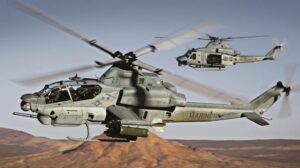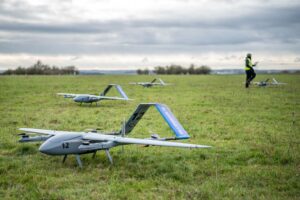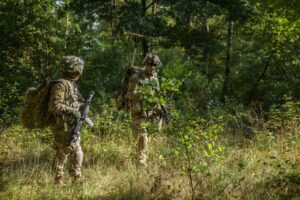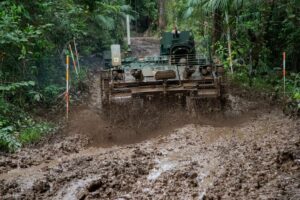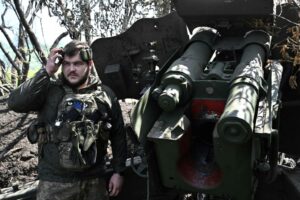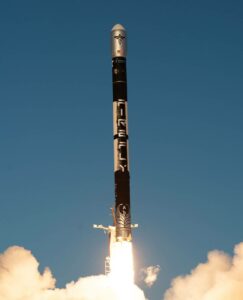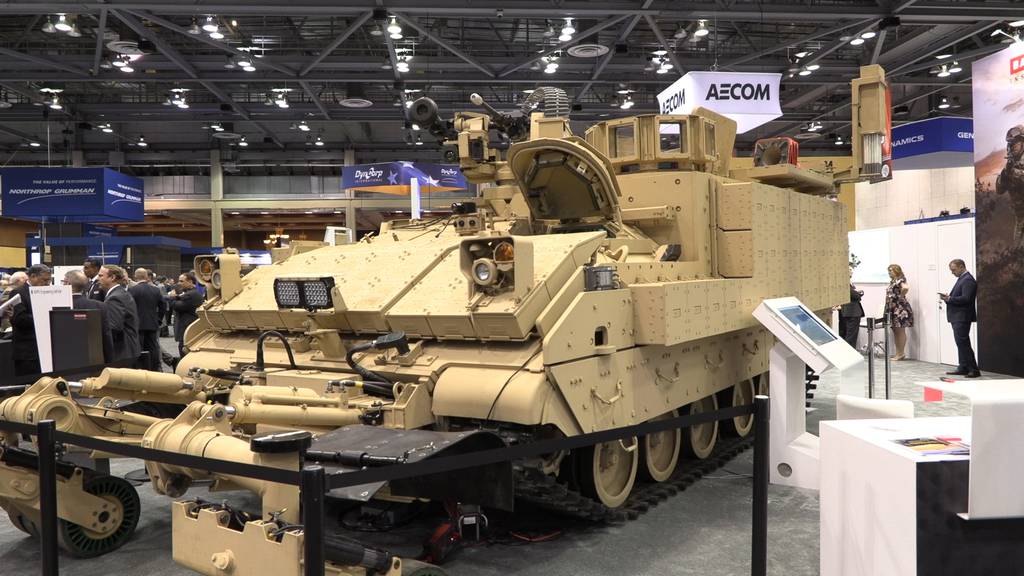
HUNTSVILLE, Ala. — BAE Systems is moving most of its production of howitzers and recovery vehicles to other places in order to make room at its York, Pennsylvania, facility to build new Armored Multipurpose Vehicles as well as Amphibious Combat Vehicles, according to a company executive.
“Our biggest program is kind of AMPV right now,” Jim Miller, vice president of business development for combat mission systems, said at the Association of the U.S. Army’s Global Force Symposium here today.
The Army is not only likely days from reaching a full-rate production decision for the AMPV, the service is also planning on ordering more vehicles from BAE so it can more rapidly replace aging M113 armored personnel carriers sent to Ukraine with the more modern vehicle.
The Army plans to buy 197 AMPVs in fiscal 2024, which results in BAE ramping up production from 12 AMPVs a month to 16.
Additionally, the company is busy building ACVs for the U.S. Marine Corps.
“As we look at our industrial network, we’ve got to be able to flex and grow that and be pretty agile about that given the demands we see in front us,” Miller said. “We’re going to focus [York] to be our AMPV and our ACV center of excellence.”
The company already moved M88A2 Hercules recovery vehicle work to Anniston Army Depot, Alabama. “We’ve done that pretty successfully. We’re actually delivering our first vehicles from Anniston … already,” Miller said.
The company has continued to perform some work on M88 hulls at York, but now that will be moved to a partner facility. Miller said he was not able to disclose the partner yet. That company will deliver hulls to Anniston, where assembly is performed.
But the move that will “grab your attention,” Miller said, is the plan to move assembly of the M109A7 Paladin Integrated Management System 155mm tracked, self-propelled howitzer and ammunition carrier hulls to Anniston. The company plans to keep fabrication of the PIM hull at York because that will remain the site of major welding work.
BAE will also retain final assembly and test work at its Elgin, Oklahoma, facility.
Bradley Fighting Vehicle builds will take place at Anniston with some work still at York.
The plan at York is to build a total of 430 vehicles a year, with over 190 of those AMPVs.
The company plans to begin moving things around this summer.
Other improvements are underway to ensure BAE can hit the rapid production increase for AMPV, Miller noted. The company has already added robotic welding, a swim pond for the ACV, and replaced all of its machining capabilities.
The swim pond is already creating efficiencies and savings within the ACV program as BAE used to take the vehicles all the way to Baltimore Harbor to swim, a “waste of time and money,” Miller said.
The Army provided $27 million from Ukraine supplemental funding to help ramp up AMPV manufacturing, which covered facilities modernization. BAE is investing the rest and has already spent $250 million on the robotic welding, swim pond and machining replacements, according to Miller.
“We’re pretty excited about the move,” Miller said, and “we hope that helps us field those critical vehicles out to the Army faster than they were intended to be fielded previously.”
Jen Judson is an award-winning journalist covering land warfare for Defense News. She has also worked for Politico and Inside Defense. She holds a Master of Science degree in journalism from Boston University and a Bachelor of Arts degree from Kenyon College.
- SEO Powered Content & PR Distribution. Get Amplified Today.
- Platoblockchain. Web3 Metaverse Intelligence. Knowledge Amplified. Access Here.
- Source: https://www.defensenews.com/digital-show-dailies/global-force-symposium/2023/03/29/bae-begins-major-reshuffle-of-army-marine-corps-vehicle-work-sites/
- :is
- $UP
- 2024
- 70
- 8
- a
- Able
- About
- According
- actually
- added
- agile
- Aging
- Alabama
- All
- already
- ammunition
- and
- ARE
- Army
- around
- Arts
- AS
- Assembly
- Association
- At
- attention
- award-winning
- BAE Systems
- baltimore
- BE
- because
- begin
- Biggest
- boston
- Boston University
- build
- Building
- builds
- business
- business development
- buy
- CAN
- capabilities
- carriers
- Center
- Center of Excellence
- College
- combat
- company
- continued
- covered
- covering
- Creating
- critical
- Days
- decision
- Defense
- Degree
- deliver
- delivering
- demands
- Development
- Disclose
- efficiencies
- ensure
- Excellence
- excited
- executive
- facilities
- Facility
- faster
- field
- fighting
- final
- First
- Fiscal
- Focus
- For
- Force
- from
- front
- funding
- given
- Global
- going
- Grow
- help
- helps
- here
- Hit
- holds
- hope
- HTTPS
- images
- improvements
- in
- Increase
- industrial
- integrated
- investing
- IT
- ITS
- Jim
- journalism
- journalist
- jpg
- Keep
- Kind
- Land
- likely
- Look
- M88
- major
- make
- management
- management system
- manufacturing
- Marine
- master
- Miller
- million
- Mission
- Modern
- modernization
- money
- Month
- more
- most
- move
- moving
- network
- news
- noted
- of
- Oklahoma
- on
- order
- Other
- partner
- Pennsylvania
- perform
- Personnel
- Place
- Places
- plan
- planning
- plans
- plato
- Plato Data Intelligence
- PlatoData
- POND
- president
- pretty
- previously
- Production
- Program
- provided
- Ramp
- ramping
- rapid
- reaching
- recovery
- remain
- replace
- replaced
- REST
- Results
- retain
- Room
- s
- Said
- Savings
- Science
- service
- site
- Sites
- So
- some
- spent
- Still
- Successfully
- summer
- Symposium
- system
- Systems
- Take
- test
- that
- The
- things
- time
- to
- today
- Total
- u.s.
- Ukraine
- Underway
- university
- us
- vehicle
- Vehicles
- Vice President
- Way..
- WELL
- which
- will
- with
- within
- Work
- worked
- year
- Your
- zephyrnet

